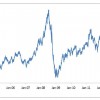Consumer demand for indoor foliage plants is decreasing. One strategy to counter decreasing demand is to align products with consumer needs. To explore this strategy, this 4-page fact sheet written by Hayk Khachatryan and Alicia Rihn and published by the Department of Food and Resource Economics examines purchasing barriers for indoor foliage plants so that breeders, growers, suppliers, and retailers may develop and promote products to overcome those barriers. This paper also investigates the potential of using novel plant attributes that are not readily apparent in retail outlets to generate consumer interest in indoor foliage plants.
http://edis.ifas.ufl.edu/fe994
Tag: Ornamental Plant Nursery Industry
Floridian Consumer Perceptions of Local versus Organic Ornamental Plants
 Horticultural consumers in Florida are interested in local and organically produced plants. But these terms can mean different things in different regions. UF/IFAS researchers conducted a survey last summer which suggests that consumers in central Florida define local as plants that are grown near where they are sold and identify the most important local benefits as product safety, quality, and community support. Organic plants are perceived as requiring fewer chemical additives and being healthier for the environment. The importance of these traits varies by plant type. This 5-page fact sheet was written by Hayk Khachatryan and Alicia Rihn, and published by the UF Department of Food and Resource Economics, February 2015.
Horticultural consumers in Florida are interested in local and organically produced plants. But these terms can mean different things in different regions. UF/IFAS researchers conducted a survey last summer which suggests that consumers in central Florida define local as plants that are grown near where they are sold and identify the most important local benefits as product safety, quality, and community support. Organic plants are perceived as requiring fewer chemical additives and being healthier for the environment. The importance of these traits varies by plant type. This 5-page fact sheet was written by Hayk Khachatryan and Alicia Rihn, and published by the UF Department of Food and Resource Economics, February 2015.
http://edis.ifas.ufl.edu/fe964
Factors Affecting Consumer Preferences and Demand for Ornamental Plants
 The primary goal of this study is to assist industry participants by providing information about consumer purchasing preferences, including information about past and future expenditures on ornamental plants, plant-specific and store-specific factors that influence purchase decisions. Additionally, the study sought to determine whether providing consumers with information about the health and well-being, environmental, and economic benefits of ornamental plants had any effects on consumer preferences for ornamental plants. The main results of the survey are briefly summarized below. The full report titled “Investigation of Factors Affecting Consumer Preferences and Demand for Ornamental Plants” can be downloaded from the UF Horticulture Economics and Marketing Research Program website at http://fred.ifas.ufl.edu/horticulture-economics/publications.shtml”. This 5-page fact sheet was written by Hayk Khachatryan and Hee Jung Choi, and published by the UF Department of Food and Resource Economics, February 2014.
The primary goal of this study is to assist industry participants by providing information about consumer purchasing preferences, including information about past and future expenditures on ornamental plants, plant-specific and store-specific factors that influence purchase decisions. Additionally, the study sought to determine whether providing consumers with information about the health and well-being, environmental, and economic benefits of ornamental plants had any effects on consumer preferences for ornamental plants. The main results of the survey are briefly summarized below. The full report titled “Investigation of Factors Affecting Consumer Preferences and Demand for Ornamental Plants” can be downloaded from the UF Horticulture Economics and Marketing Research Program website at http://fred.ifas.ufl.edu/horticulture-economics/publications.shtml”. This 5-page fact sheet was written by Hayk Khachatryan and Hee Jung Choi, and published by the UF Department of Food and Resource Economics, February 2014.
http://edis.ifas.ufl.edu/fe938
Regulatory and Market Risk Factors and the Emissions Reduction Potential for Energy Intensive Firms (FE919)
 In the last decade, one of the major global environmental concerns has been greenhouse gas emissions. As part of the political debate over climate change, various policy initiatives are being proposed. Energy intensive firms that emit large amounts of greenhouse gases (e.g., floriculture or nursery firms with heated greenhouses) will be operating in an environment of high regulatory and market uncertainties in the coming years. This 3-page fact sheet presents a brief introduction of the regulatory and market risks faced by energy intensive firms and a case study of emissions reduction potential in the horticulture industry. Written by Zhengfei Guan, and published by the UF Department of Food and Resource Economics, March 2013.
In the last decade, one of the major global environmental concerns has been greenhouse gas emissions. As part of the political debate over climate change, various policy initiatives are being proposed. Energy intensive firms that emit large amounts of greenhouse gases (e.g., floriculture or nursery firms with heated greenhouses) will be operating in an environment of high regulatory and market uncertainties in the coming years. This 3-page fact sheet presents a brief introduction of the regulatory and market risks faced by energy intensive firms and a case study of emissions reduction potential in the horticulture industry. Written by Zhengfei Guan, and published by the UF Department of Food and Resource Economics, March 2013.
http://edis.ifas.ufl.edu/fe919
Production and Marketing Practices in the Florida Nursery Industry, 2008 (FE894)
This 23-page report presents information on production and marketing practices of Florida’s wholesale nursery and greenhouse industry in 2008, with comparisons to the rest of the United States, based on information collected through national mail, Internet, and telephone surveys. Written by Alan Hodges, and published by the UF Department of Food and Resource Economics, May 2011.
http://edis.ifas.ufl.edu/fe894
